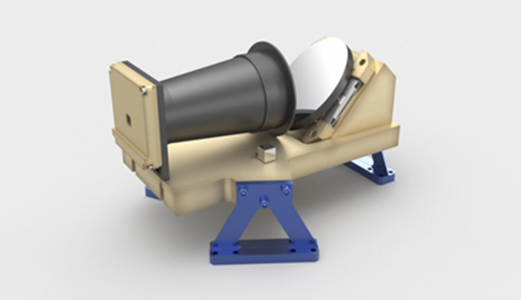Thermal infrared imaging camera for small satellites (SATIRIM 2)
Programme
GSTP
Programme Reference
GT17-416MM
Prime Contractor
OIP NV
Start Date
End Date
Status
Closed
Country
Belgium

Objectives
The objectives of this activity are to develop the Engineering Model of the SATIRIM infrared camera with the focus on the ROE (read out electronics).
Description
An important bottleneck to monitor surface energy fluxes and evapo-transpiration is the lack of accessible land surface temperature and land surface emissivity data with sufficient revisit time and spatial resolution. Evaporo Transpiration (ET) and soil moisture monitoring products are crucial in agricultural and associated water management, precision farming and crop yield forecasting.
;
In the activity: ?De-risk assessment: Terrestrial Thermal Infra Red camera for space? an investigation of space qualification of the Pico1024 microbolometer detector was performed, together with a performance assessment, using the microbolometer detector equipped with commercial read out electronics. Also, during a TIRA instrument pre-development, the design of readout electronics for the same Pico1024 microbolometer detector have been completed. These activities are the starting point, for this new activity that aims to build an Engineering Model (EM) of the SATIRIM instrument.
The major contribution of this activity is to test an electronic design which can be built with components appropriate for a cubesat mission of limited lifetime (below 2 years). As such, a major risk for the development of the SATIRIM instrument is eliminated.
The following activities are proposed to build the EM:
- Adapt the component selection and schematics of the TIRA ROE to the SATIRIM application
- Perform the layout of the PCBs, ensuring that the principles that are dictated by space environments are respected
- Procurement of the PCBs, electrical components and the microbolometer detector. The components will be milspec quality parts, which have a space qualified alternative that is suitable for a cubesat
- Assembly of the components to the PCBs and of the microbolometer detector, thus creating the EM
Functional and performance tests of the EM
Application Domain
GEN-Generic Technologies
Technology Domain
17-Optoelectronics
Competence Domain
5-Radiofrequency & Optical Systems and Products
Initial TRL
TRL 3
Target TRL
TRL 5
Achieved TRL
TRL 4
Public Document
Executive Summary
Final Presentation
